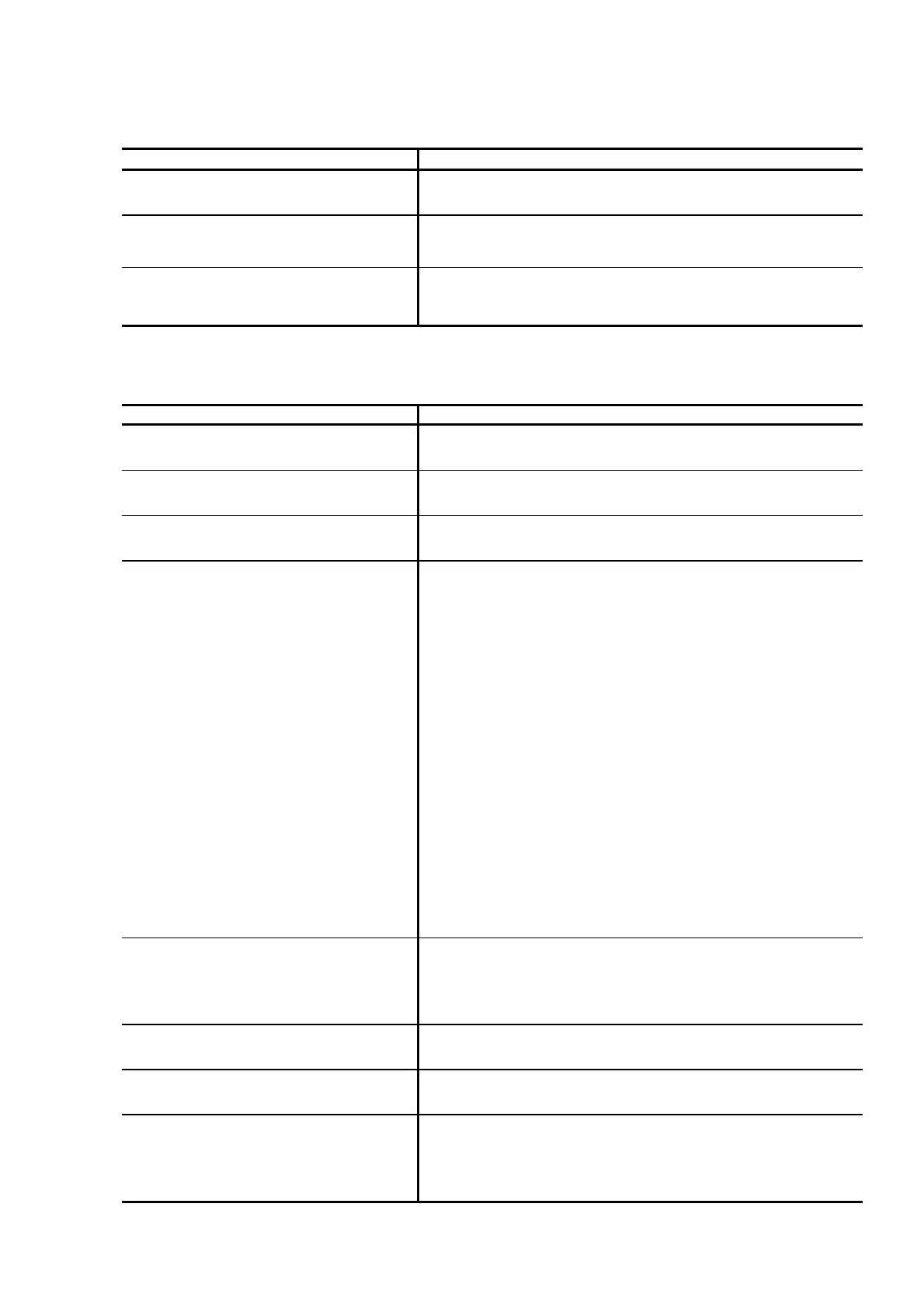— 12-2 —
12.2.1. Power Trouble
Table 12-3: Troubleshooting for power problem
Cause Remedy
1) No control power supplied.
• Check the control power voltage at the connector of the Driver
Unit.
2)
CPU is not functioning.
• The power is on but the CPU is not
functioning.
• Refer to “CPU Error” in “11.3. Causes and Remedy.”
3) Defective Driver Unit.
• If no failure is found in the above checks, the Driver Unit may be
defective. Replace it referring to “Appendix 4: Procedure for
Replacing the EDC Driver Unit.”
12.2.2. Motor Trouble
Table 12-4: Troubleshooting for Motor trouble
Cause Remedy
1)
Wrong combination of Motor and
Driver Unit.
• Check if the combination of the Motor and the Driver Unit is
correct.
2) Alarm or warning is occurring. • Identify a warning or an alarm.
3)
Overload or mechanical interference
with other part.
• The Motor is locked by a part of surrounding mechanism.
Check for mechanical interference with other part of mechanism.
4)
Positioning is not completed.
• (As the sequence of the total System)
The System recognizes that the
previous positioning command is not
executed.
• (In case of a program operation)
executing sequence does not complete
the previous positioning command.)
4-1) Overload or interference with
the equipment into which the
Motor is installed.
• The Motor is not locked, but an
excessive friction load is applied to the
Motor due to the mechanical
interference with the surrounding
mechanism.
4-2) Poor tuning of servo gains
4-3) In the middle of processing a
positioning command.
• Executing a positioning command
• Executing a program operation
caused by the parameter OE2.
• Confirm if the output BUSY is closed or monitor the state of Input
and output by the monitor IO0/RP.
• If the BUSY signal is closed, the System is executing a positioning
command.
4-1): Check the mechanical interference with the surrounding
mechanism.
4-2): Refer to “5. Tuning” for adequate tuning.
4-3):
• Wait for completion of the positioning command.
• Terminate the positioning command (such as the command
JOG).
• Input the STP (Stop) command to interrupt the positioning
operation.
5)
No torque output because the
parameter TL is set to zero (TL0).
• Check if the parameter TL100 is specified by the ?TL command.
If not, the setting may be altered for some reason. (Normally it
should be TL100.)
• Enter TL100 for 100% output torque. (Requires an entry of the
password.
6)
Motor servo is deactivated by the
command MO (Servo off).
• Enter the command SV to activate the Motor servo.
7)
The objective program channel is not
selected in a program operation.
• Use the command IO0 to confirm if the objective channel is
selected.
8)
Defective Cable, Motor and/or Driver
Unit.
• Refer to “Appendix 2: How to Check Motor Condition.” Replace
the cable of the Motor if necessary.
• If no failure is found in the Cable and the Motor, the Driver Unit
may be defective. Replace it referring to “Appendix 4: Procedure
for Replacing the EDC Driver Unit.”
